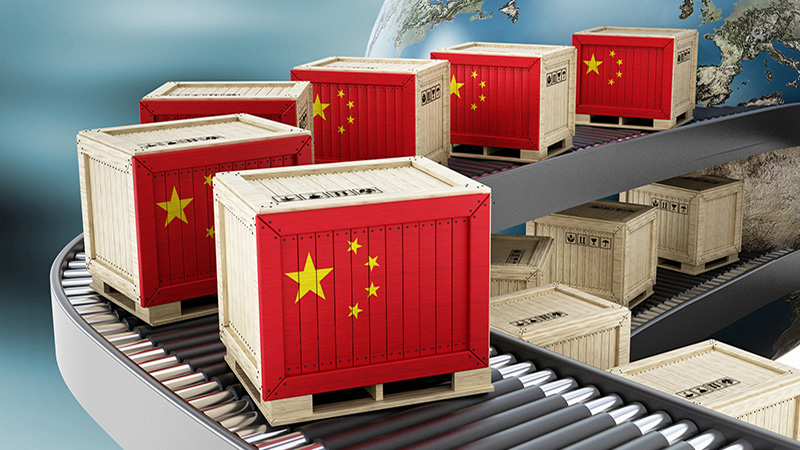By Chau Nguyen, economist at Capital Group
After several decades of rising globalisation and the world becoming increasingly interconnected, that trend plateaued in the post-financial crisis period – and there are signs of it going into reverse. The pandemic has clearly laid bare a shifting backdrop for global trade.
To understand the significance of emerging competitors to China in global supply chains, and the viability of the ‘China Plus One’ strategy many companies are adopting, this de-globalisation must be analysed through four channels – production and trade, foreign investment, financial friction and technological restrictions.
Production and trade
For all the potential beneficiaries of any manufacturing shift away from China, there is a trade-off between breadth, cost and proximity.
At first glance, India and Mexico look the most obvious recipients of growing China Plus investment, boasting key ingredients for manufacturing success such as cheap labour and young populations.
India initially appears to have the broadest economic advantages across industries and low manufacturing wages, but its wage per unit of value added is currently not competitive with China (or even Mexico for that matter) and is now actually higher than the US.
Mexico, meanwhile, has cost advantages and proximity to the US in its favour, and recent manufacturing wins with the likes of Tesla have catapulted Mexico ahead of China and Canada as the number one trade partner of the US. In 2023, for the first time in decades, the US purchased more goods from Mexico than anywhere else in the world.
However, the country’s potential to be a world manufacturing hub is currently limited outside of select industries, and it lacks the logistics/infrastructure strength to compete on a global scale.
In the short to mid term, supply chains will simply lengthen around China and emerging market beneficiaries will become part of these longer chains. While trade can potentially evolve as production shifts, no one country can currently match China’s breadth of advantages, despite growing noise around certain contenders.
Foreign investment
Foreign investment patterns have also yet to show a decisive successor to China. While India and Mexico show positive trends in the FDI ranks, these are not yet sufficient for them to be durable strategic players.
India has been under-invested in past decades and although FDI is coming in, net investment is basically unchanged relative to the size of the economy, though infrastructure development and better logistics and technology from multinationals will likely improve this.
As for Mexico, half of foreign investment in the country is in industries focused on producing US-bound exports.
Mexico will continue to improve its position given the advantages it offers companies that want to tap into the US market, including a skilled and relatively cheap workforce, solid infrastructure in the north, and access to relatively inexpensive US oil and gas.
Northern Mexico has long been a popular location for automobile manufacturing, however, moving further from the US border, it Is clear that Mexico is not having the same type of success attracting foreign investment.
It is important to watch for possible positive spillovers, improvement in more universally applicable logistics, for example, or growth in other supporting industries to create a more complete manufacturing ecosystem.
Financial friction
As geopolitical distance increases between countries, financial friction will not only limit foreign investment, but also international and domestic lending. In such an environment, countries dependent on financing from those that are less geopolitically aligned are more at risk.
At the extreme end of this friction, financial sanctions have increased substantially over the last decade, with close to 60 countries facing some manner of restrictions in 2022. Meanwhile, geopolitical distance is weighing on portfolio investment as countries tend to give a smaller share of portfolio investment to less aligned peers.
While equity flows into China have fallen significantly over recent years, money going into Mexico and the Asean region has remained muted, although India had a more encouraging 2023.
A similar story is evident in bond markets – while flows into China have turned negative, flows into potential China Plus One beneficiaries have been muted or even negative in 2022 and 2023.
Technological restrictions
China, the US and the EU have issued bans on technology providers and chip manufacturers under the umbrella of national security concerns. But these conflicts on final and intermediate goods are likely to find their way into raw inputs and industries that are too difficult to relocate.
China and its allies have concentrated production of many raw materials, meaning the US will need to look to alternative partners to source these. China’s position as a critical mineral processor is relatively unchallenged at present and its dominance over foreign supplies has accelerated.
Given this backdrop, there is no ‘next China’ as things stand. Manufacturing alternatives will vary by industry and end-market geography, and the picture will be more China Plus One, Plus Two, Plus Three and so on.
There is long-term potential for India to become a true alternative as it has the broadest scope of economic advantages across industries.
Looking at sectors where a country has lower wages than China and a sizable workforce in an industry, India can already boast this in autos, electronics and electricals, chemicals, machinery, metals, minerals, rubber and plastics, and textiles. However, it will take considerable time for India to overcome past decades of underinvestment.
Mexico is a clear beneficiary of longer US/China supply chains given its advantages in autos and electronics, and its proximity to the US, but lacks the infrastructure to compete globally. In the World Bank’s 2023 Logistics Performance Index, Mexico ranked 66th out of 139 countries, compared with 48th for India, 51st for Vietnam and 52nd for Brazil.
As the world de-globalises and production and trade shift out of China, the future is still open. Many countries have the potential to leverage industry advantages and proximity to end markets. The key will be identifying which are best placed to capitalise against a backdrop of trading places and how this translates into investment opportunities.







